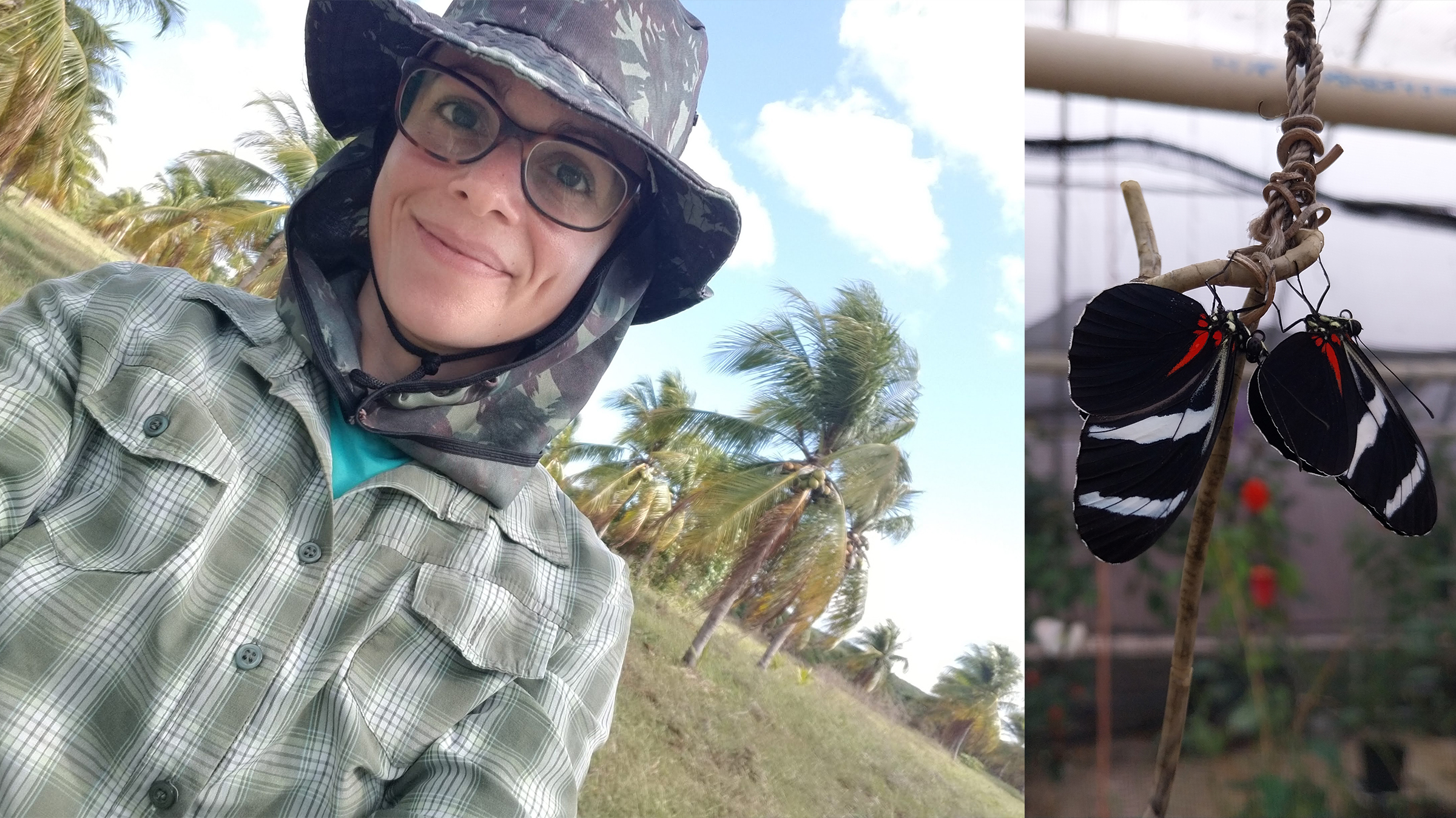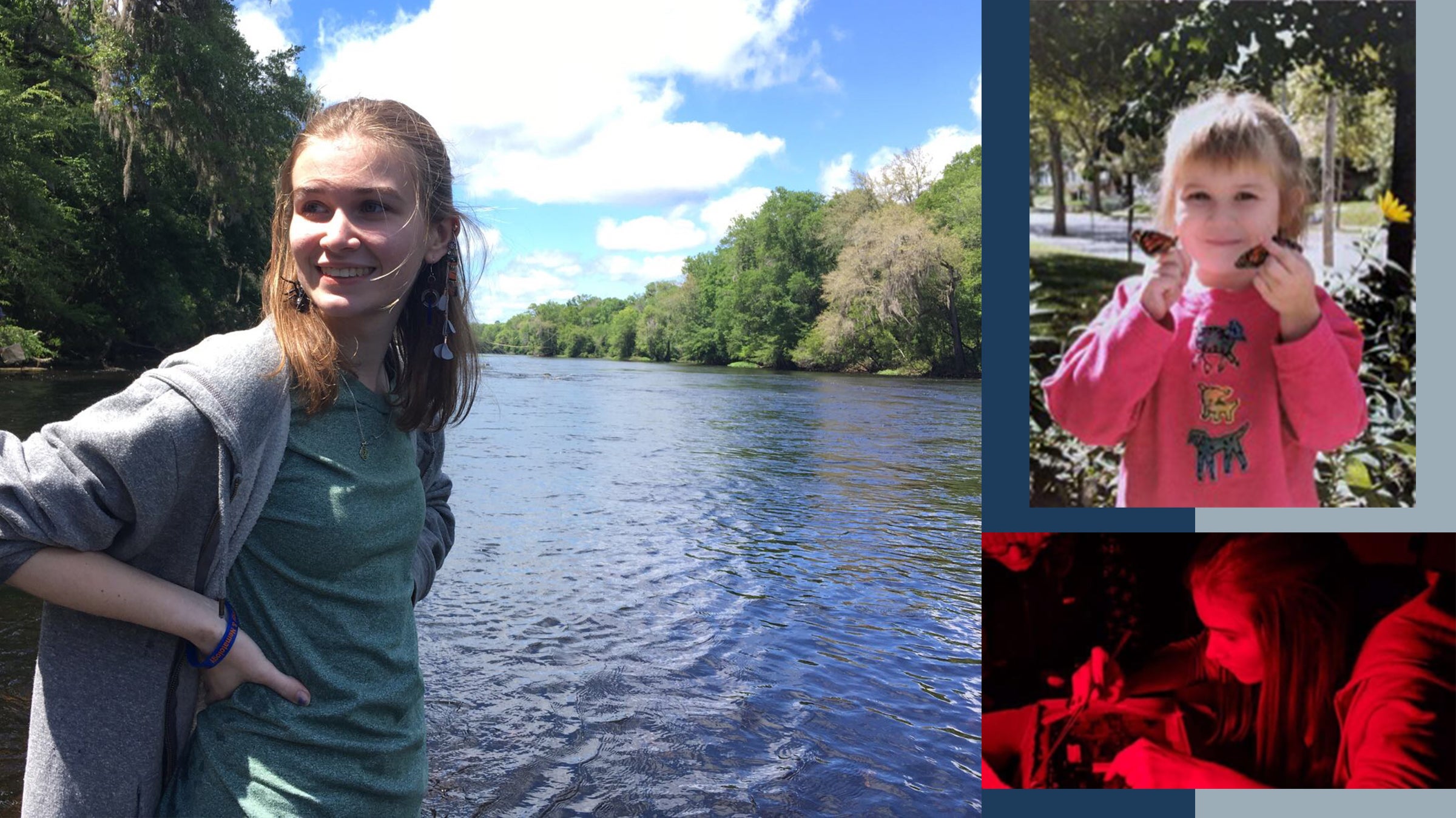
Priscila Albuquerque de Moura is one of our 2023 Stengl-Wyer Scholars. Priscila is a biologist particularly interested in integrating behavioral ecology and neurosciences to help understand the spatial dynamics of neotropical butterflies. She conducted her doctoral research at Universidade Federal do Rio Grande do Norte in Brazil, where she used a combination of field and laboratory experiments to study various aspects of spatial memory in Heliconius butterflies. As a Stengl-Wyer Scholar, Priscila will work with Dr. Lawrence Gilbert, Dr. Felicity Muth and Dr. Kristen Harris to investigate landmark use in foraging behavior and the impact of the foraging experience on Heliconius butterflies’ brain plasticity.
As part of the Stengl-Wyer Endowment, the Stengl-Wyer Postdoctoral Scholars Program provides up to three years of independent support for talented postdoctoral researchers in the broad area of the diversity of life and/or organisms in their natural environment.
In this blog, Priscila talks about her research beginnings, what she's working on, and how being a Scholar will move her research goals ahead.
Tell us where you came from before UT, and what you studied then?
I spent most of my life in the northeasternmost state of Brazil, Rio Grande do Norte, where I pursued my undergraduate, masters, and doctoral studies at the Federal University of Rio Grande do Norte at different stages of my life. During my undergraduate studies in biology, I initiated an independent research project aimed at investigating the spatial learning behavior in a specific species of marmoset monkeys, which fostered my subsequent interest in the study of spatial behavior. After completing my undergraduate degree, I took a year off academia and moved to Rio de Janeiro, where I worked in a nonprofit organization. Upon my return home, I was persuaded by Dr. Marcio Zikan Cardoso, a former doctoral student under Dr. Lawrence E. Gilbert at UT Austin, to study the population genetics of two species of Heliconius butterflies native to northeastern Brazil. During this period, as a master's degree candidate in Ecology, I had the privilege of collaborating with Dr. Marcus R. Kronforst, another former student of Dr. Gilbert, at Harvard University.

Upon graduating with a master's degree, I pursued various interests and ultimately secured a position at the Ministry of Economy in Brazil. It was during my time in this stable civil service role that I realized that my professional fulfillment lay in a more creative pursuit. Then, after a decade-long hiatus from academia, I decided to borrow a book on Heliconius butterflies authored by Dr. Chris D. Jiggins from Dr. Cardoso. Upon reading the entire book over the course of a week, I arranged a meeting with Dr. Cardoso to express my interest in exploring the spatial learning patterns of Heliconius butterflies as a potential doctoral research project. Given our lack of expertise in the subject, I invited Dr. Stephen H. Montgomery, then affiliated with the University of Cambridge and presently with the University of Bristol, to serve as my co-supervisor for the doctoral program. Over the following four years, while concurrently maintaining my full-time government position, I conducted extensive research into various facets of spatial and social learning in two species of Heliconius butterflies. My studies revealed these remarkable butterflies' exceptional homing abilities, enabling them to return to their original habitats even after being displaced to unfamiliar areas. Moreover, Heliconius exhibited adeptness in learning the location of a food source across diverse spatial scales. Nonetheless, the precise mechanisms facilitating these butterflies' navigation remain elusive.
What got you interested in studying behavioral ecology and neurosciences to better understand the spatial dynamics of neotropical butterflies?
Most of my interests and creative pursuits are sparked after reading a book. I honestly attribute a significant portion of my renewed academic enthusiasm to Dr. Chris Jiggins of the University of Cambridge, whose book, The Ecology and Evolution of Heliconius Butterflies, played a pivotal role in reigniting my scholarly curiosity. In Jiggins' book, I found two particularly compelling chapters dedicated respectively to patterns of dispersal and movement, and to brains, sex, and learning. In the latter chapter, I encountered the pioneering work of Dr. Stephen Montgomery, which left a lasting impression on me. At this point, it became unequivocally clear to me that I needed to become involved in this fascinating work.

Heliconius mepomene/cydno hybrids mating.
Does Texas present a unique situation, challenge or benefit for your research?
I count myself among the fortunate few who have had the privilege of collaborating with the legendary Dr. Lawrence Gilbert, widely recognized as the pioneer in the study of Heliconius butterflies. His seminal contributions have laid the foundation for most relevant questions into the evolution, ecology, and behavior of these remarkable creatures, setting the stage for research projects spanning decades. The opportunity to tap into his wealth of knowledge and experience is undoubtedly the highlight of my time here at UT Austin.
Moreover, Dr. Gilbert boasts the world's most extensive collection of Passiflora plants, which hold immense significance for my research as they serve as host plants for Heliconius butterflies. This unparalleled resource affords me the capability to rear virtually any Heliconius species I can acquire access to during my time at UT Austin.
Additionally, I am privileged to collaborate with Dr. Felicity Muth, a rising star in her field, and to have access to the cutting-edge facilities of Dr. Kristen Harris's laboratory, renowned for its advancements in the study of synapse structure and function. This convergence of expertise and resources provides an unparalleled environment for conducting groundbreaking research in my field of study.
Do you use the resources of our field stations like the Brackenridge Field Lab? If so, how?
Yes, I do use the resources of the Brackenridge Field Lab for my research endeavors. Specifically, I conduct experiments focused on the spatial learning behavior of Heliconius butterflies within the green houses provided by the field station. These experiments involve observing and analyzing the butterflies' navigation and memory capabilities within a seminatural habitat, contributing valuable insights into their spatial cognition processes.
How will being a Stengl-Wyer Scholar help advance your work?
Being a Stengl-Wyer Scholar will significantly advance my work by providing crucial support and resources to further my research endeavors. With this prestigious post-doctoral program, I will have access to additional funding, mentorship, and networking opportunities, all of which are essential for expanding the scope and depth of my research on Heliconius spatial learning. This support will enable me to conduct more extensive experiments, gather comprehensive data, and ultimately make significant contributions to our understanding of butterfly cognition and behavior.
Where do you see your research agenda heading after UT?
My aim is to continue delving into the field of Heliconius cognition and behavior. Therefore, I envision pursuing research positions that allow me to further explore and expand upon the discoveries and insights gained during my time at UT.



